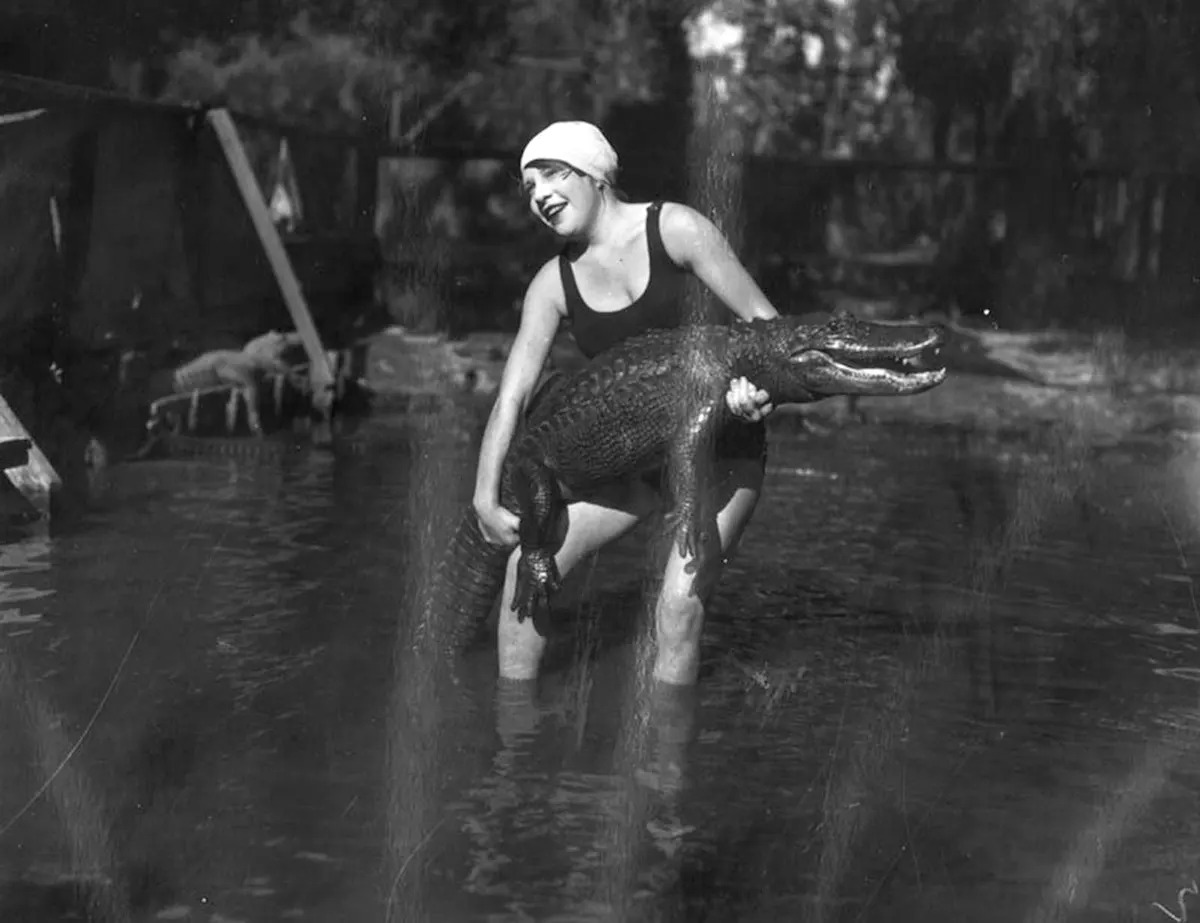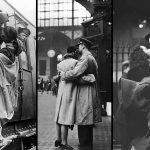Long before the days of regulated wildlife parks and strict animal safety laws, there existed a place so bizarre, so wildly unconventional, that it could only have thrived in the early 20th century.
Nestled in the sunny Lincoln Heights neighborhood of Los Angeles, the California Alligator Farm became a one-of-a-kind attraction where visitors didn’t just observe the reptiles—they interacted with them.
From baby alligators crawling over children’s laps to daring adults wrestling full-grown gators, the farm offered experiences that are unthinkable today.
Let’s take a fascinating journey through the history of this extraordinary park, exploring the jaw-dropping activities and the incredible world it created.
The Birth Of A Reptilian Wonderland
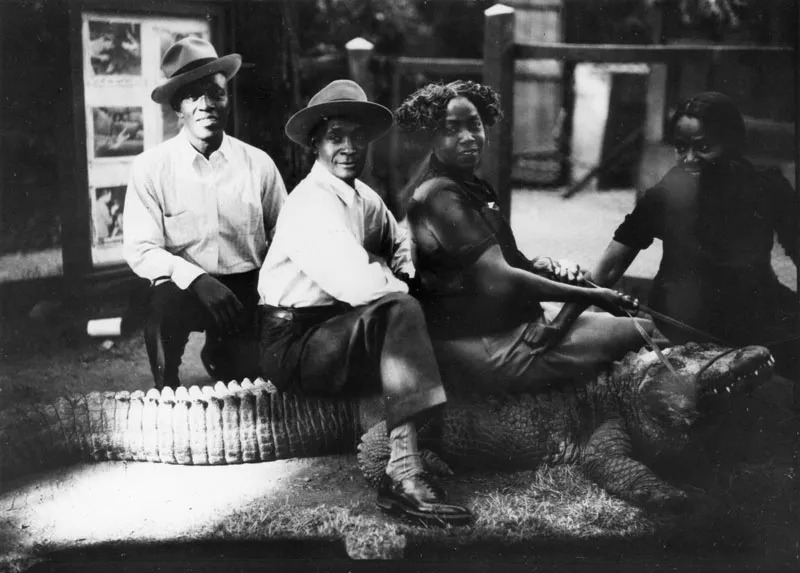
In 1907, two intrepid figures—Joseph “Alligator Joe” Campbell and Francis Victor Earnest—brought their dream to life by relocating an alligator farm from Hot Springs, Arkansas, to Los Angeles, right next to the Selig Zoo and Motion Picture Studio.
What began as a modest reptile-themed attraction quickly grew into something far more extraordinary.
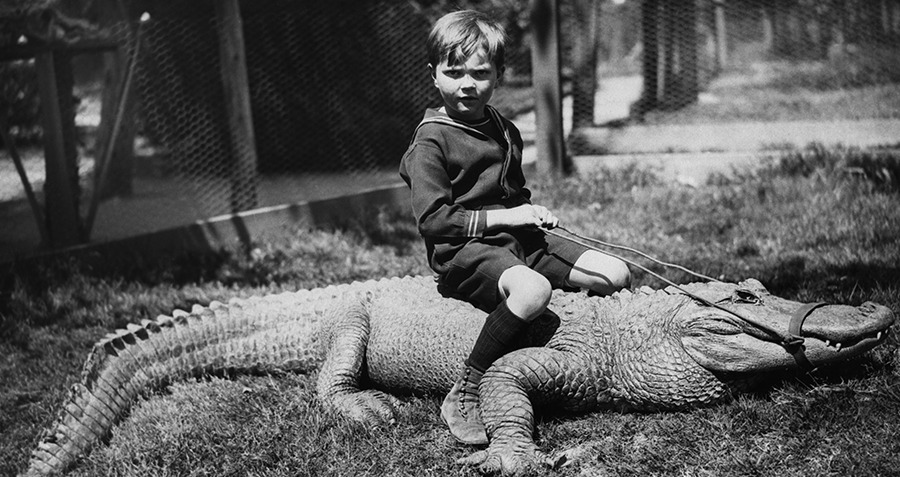
The California Alligator Farm soon became home to more than 1,000 alligators, ranging from tiny hatchlings to massive adults reaching up to 15 feet in length.
With 20 ponds spread across the park, the gators were not just on display—they were the stars of the show.
Unforgettable Visitor Experiences
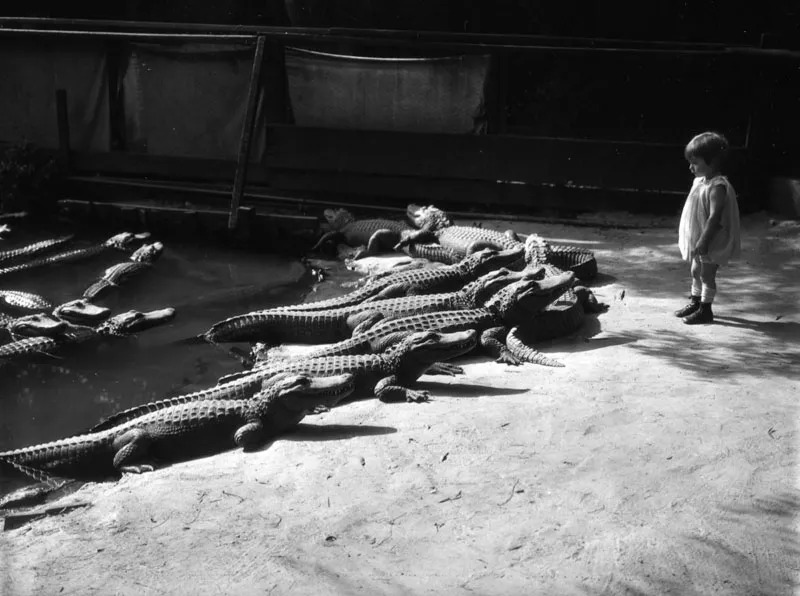
What set the California Alligator Farm apart from any other attraction of its time—or any time since—was the level of interaction it offered visitors. For just 25 cents, guests could step into a world where the boundaries between humans and wild animals were shockingly blurred.
Children sat in piles of baby alligators, letting the tiny creatures crawl across their legs. They could even ride the gators around the ponds, perched on specially-made saddles.
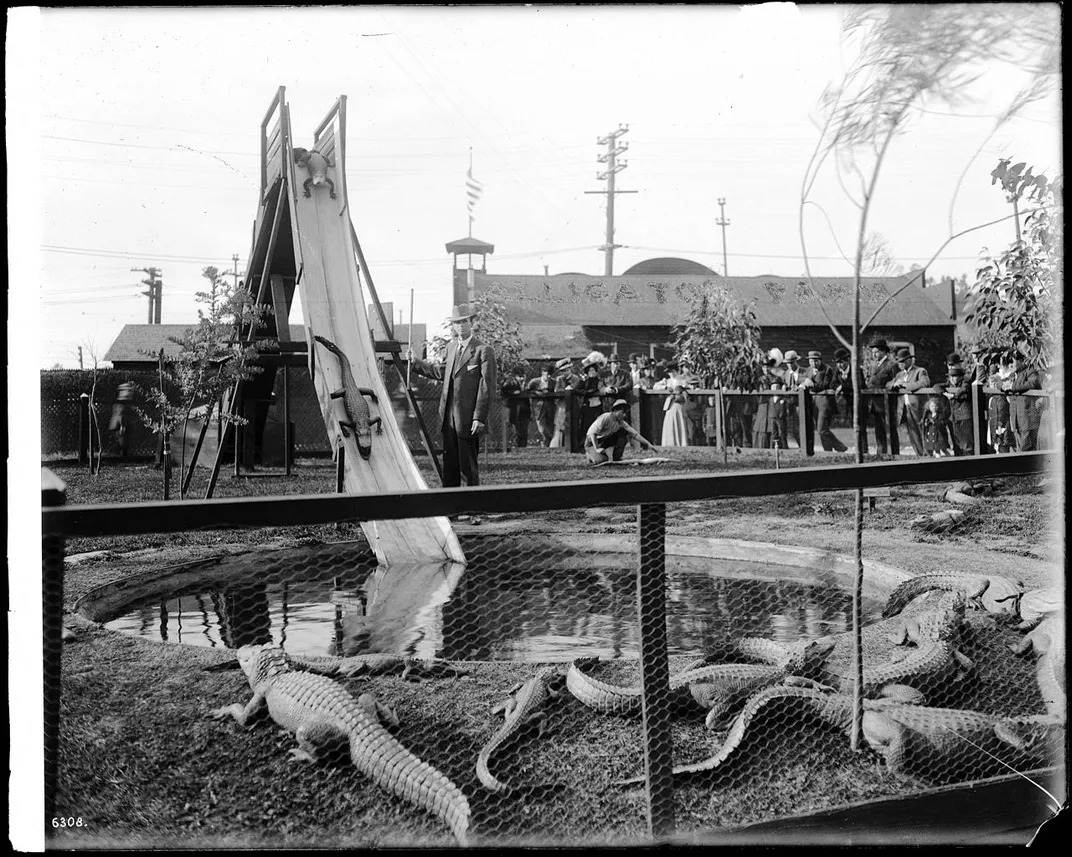
For the more daring adults, petting, laying on the ground with, and even swimming alongside full-grown alligators were all part of the experience.
Daily shows drew large crowds, eager to see the alligators in action. From watching these prehistoric reptiles slide down chutes to witnessing them wrestle with human volunteers, the entertainment was as thrilling as it was dangerous.
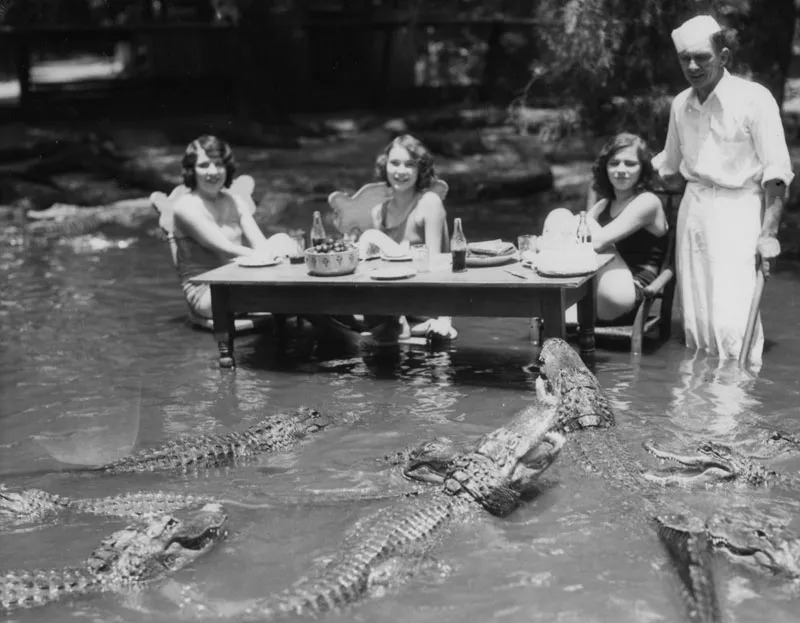
And for those looking to take a piece of the experience home, the gift shop offered trinkets made from alligator skin—and even baby alligators themselves.
The Wild Side Of Animal Attractions
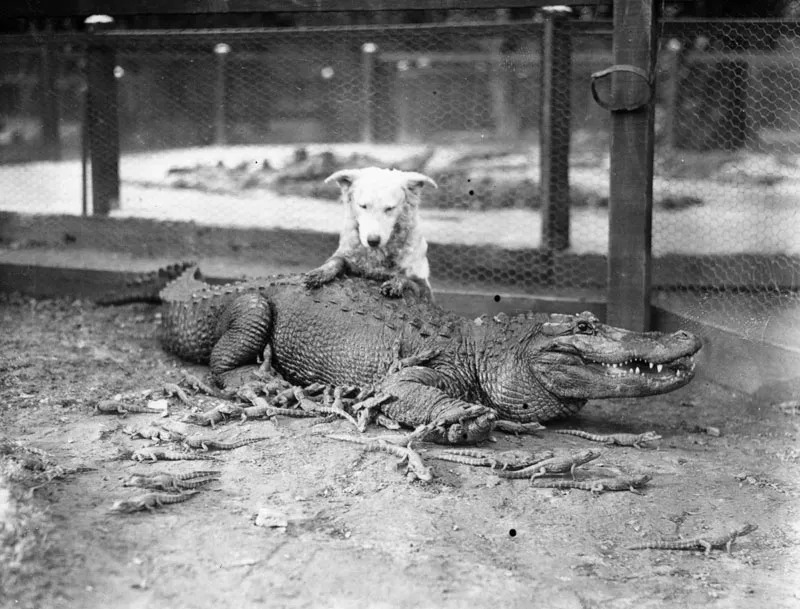
Despite the farm’s many warnings against mistreating the animals, visitors frequently handled the alligators, sometimes with little regard for safety.
The lack of strict regulations meant that children and adults alike could enter pens, interact with the gators, and even bring their pets to the park. College pranksters occasionally took it too far, stealing alligators as part of their escapades.
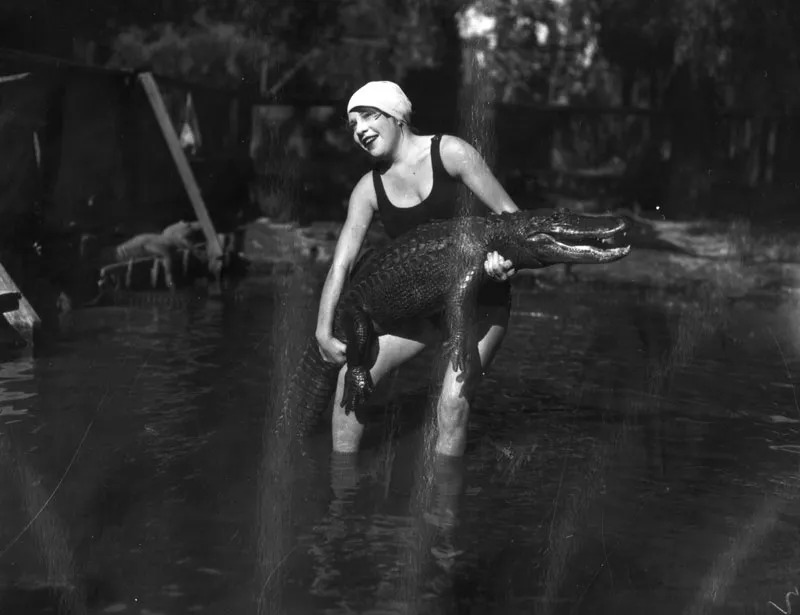
It was a time when roadside zoos and animal exhibitions operated with few restrictions, and the California Alligator Farm was a prime example of the era’s wild, unregulated spirit.
The gators were not always the most cooperative residents, either. Their loud, nocturnal calls often disturbed the neighborhood. During heavy rains, floods would allow them to escape the farm, leading to alligator sightings in nearby canals, backyards, and even swimming pools.
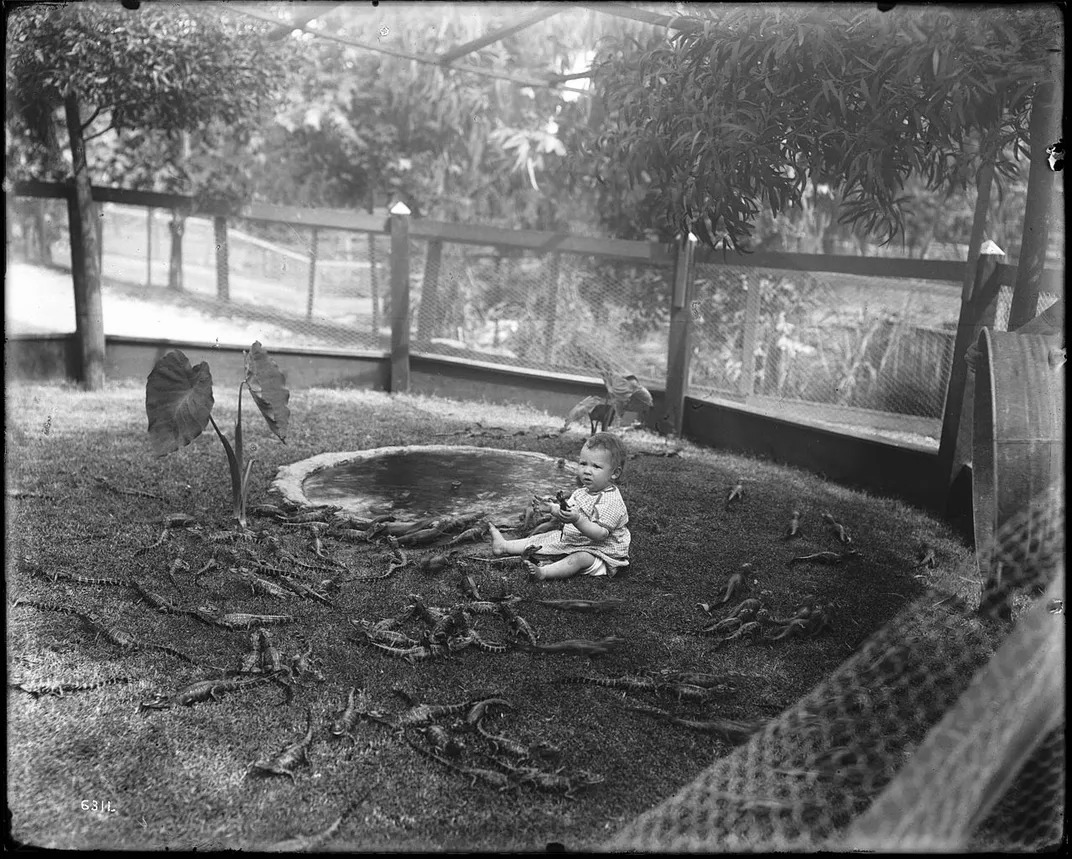
This added an unexpected layer of excitement—and fear—to the local community’s experience of the farm.
From Star Attraction To Faded Memory
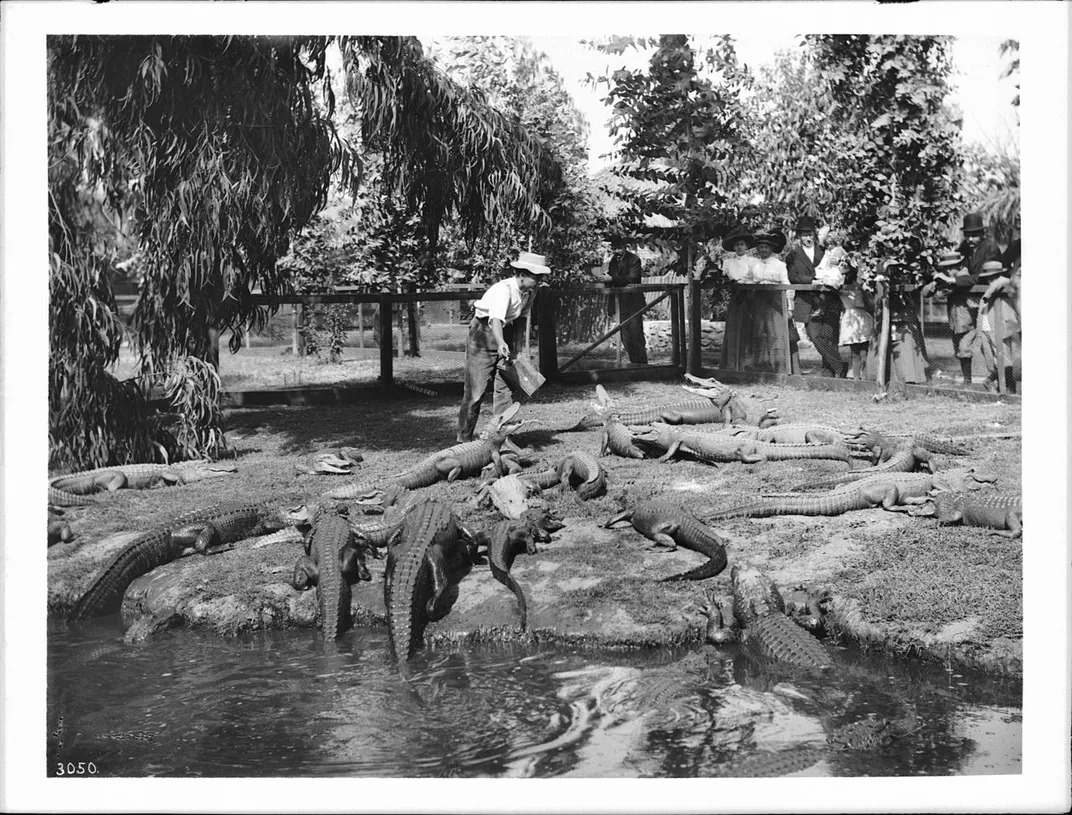
For decades, the California Alligator Farm was one of Los Angeles’ most popular tourist destinations, attracting thousands of visitors each year. However, as the years passed, the novelty began to wear off.
By the 1950s, attendance had dwindled, and the farm was relocated to Buena Park in Orange County in an attempt to revive its fortunes.
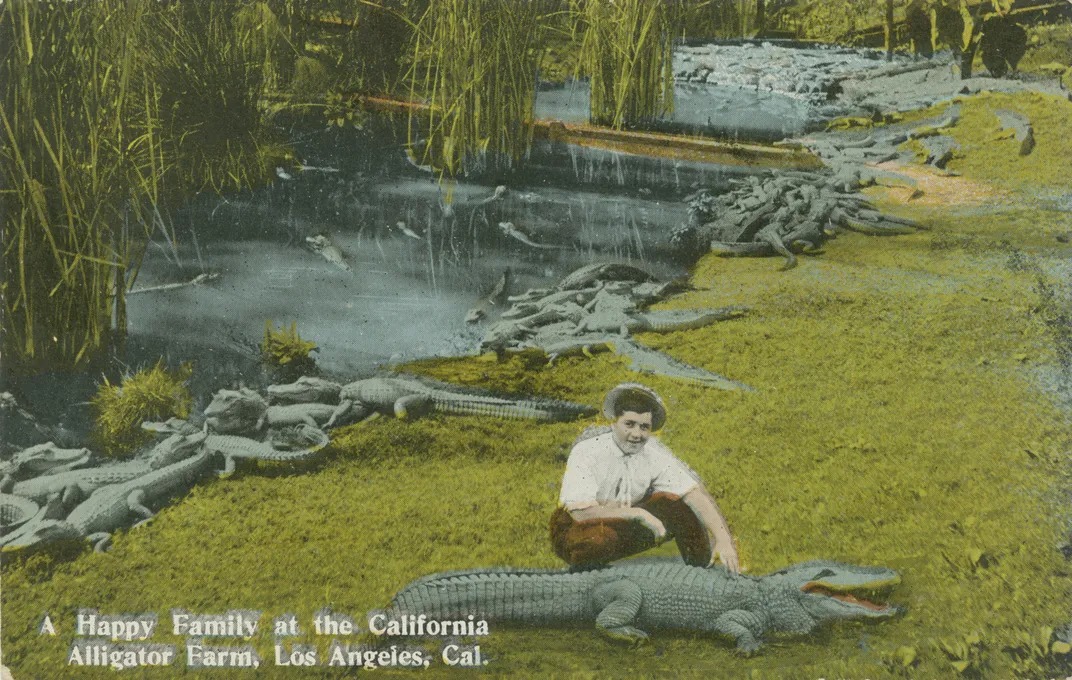
Unfortunately, this move couldn’t stop the decline, and by 1984, with attendance below 50,000 annually, the farm’s lease was not renewed, leading to its closure.
The remaining alligators were sold to a private estate in Florida, marking the end of an era.
The Legacy Of The California Alligator Farm

Though the California Alligator Farm is now a piece of history, its legacy lives on as a symbol of a time when the boundaries between humans and wild animals were pushed to their limits.
It serves as a reminder of the bizarre, unregulated world of early American roadside attractions—a world where daring and danger were all part of the fun.
Today, the idea of children playing with alligators seems almost unimaginable, but it’s a fascinating chapter in the story of how far we’ve come in understanding and respecting the animals with whom we share this planet.
More Fascinating Photos Inside California Alligator Farm
1. A visitor at the California Alligator Farm in the 1920s posing casually with a baby alligator

2. Swimmer holding alligator at 1920s California Farm
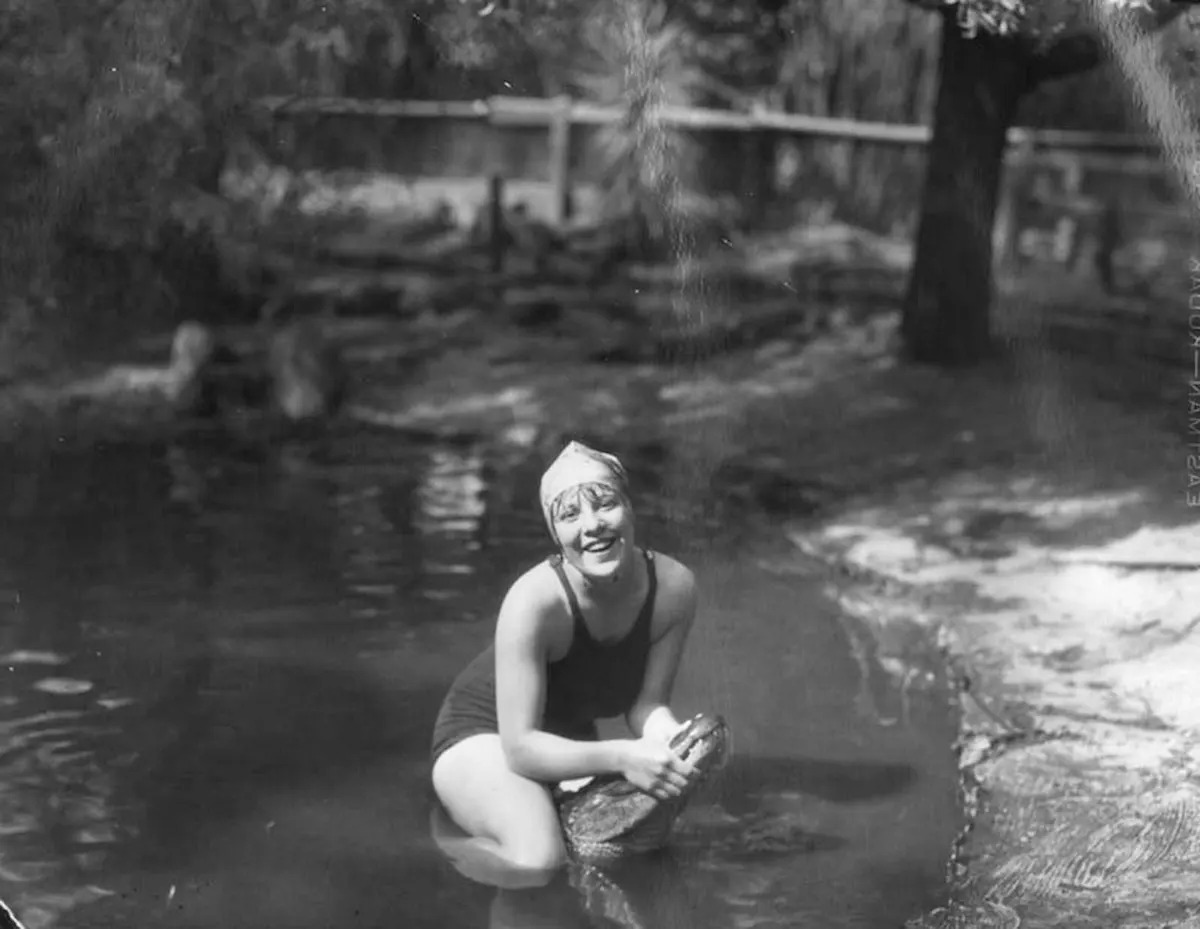
3. Woman walking alligator at 1920s California Farm
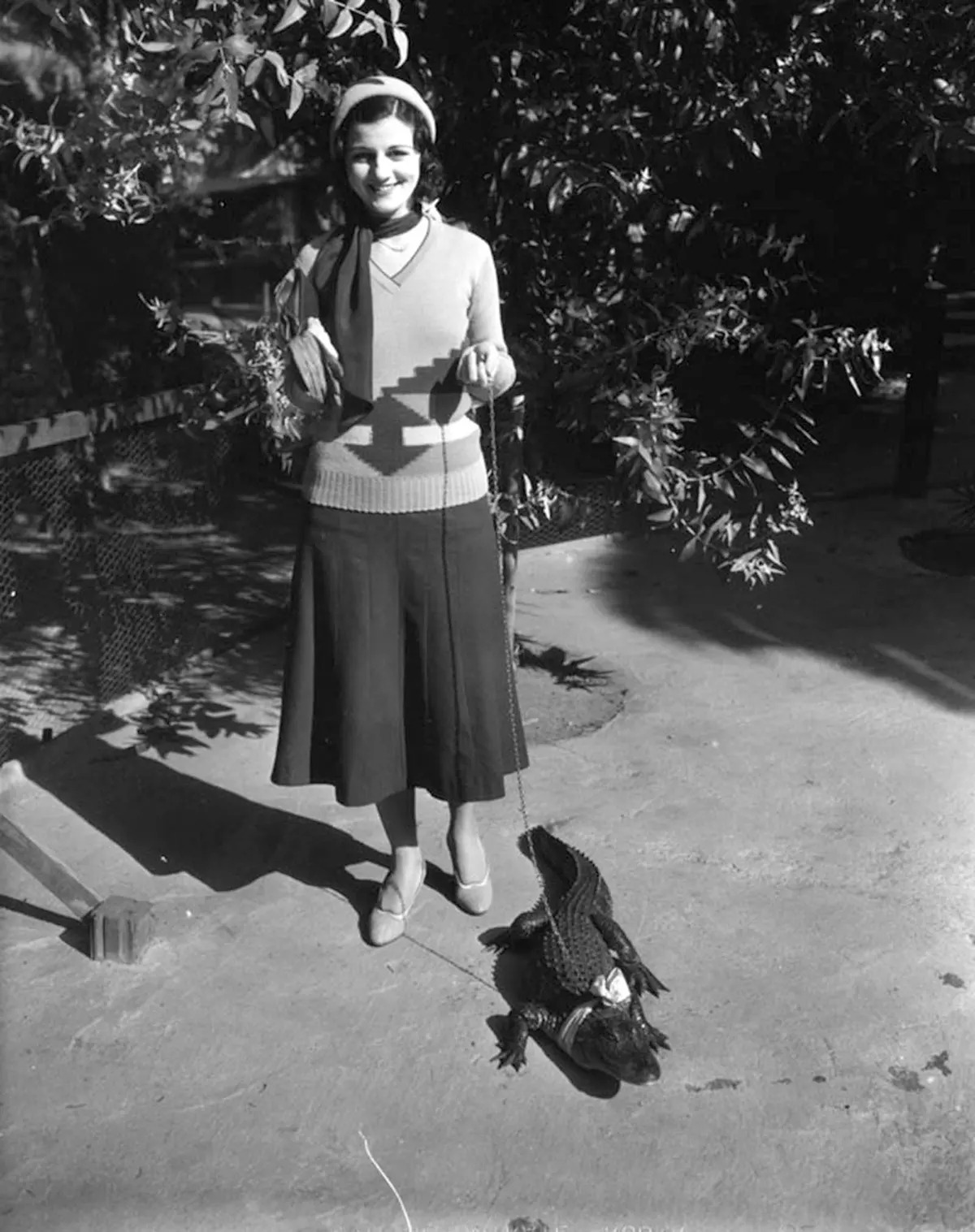
4. Woman feeding baby alligator
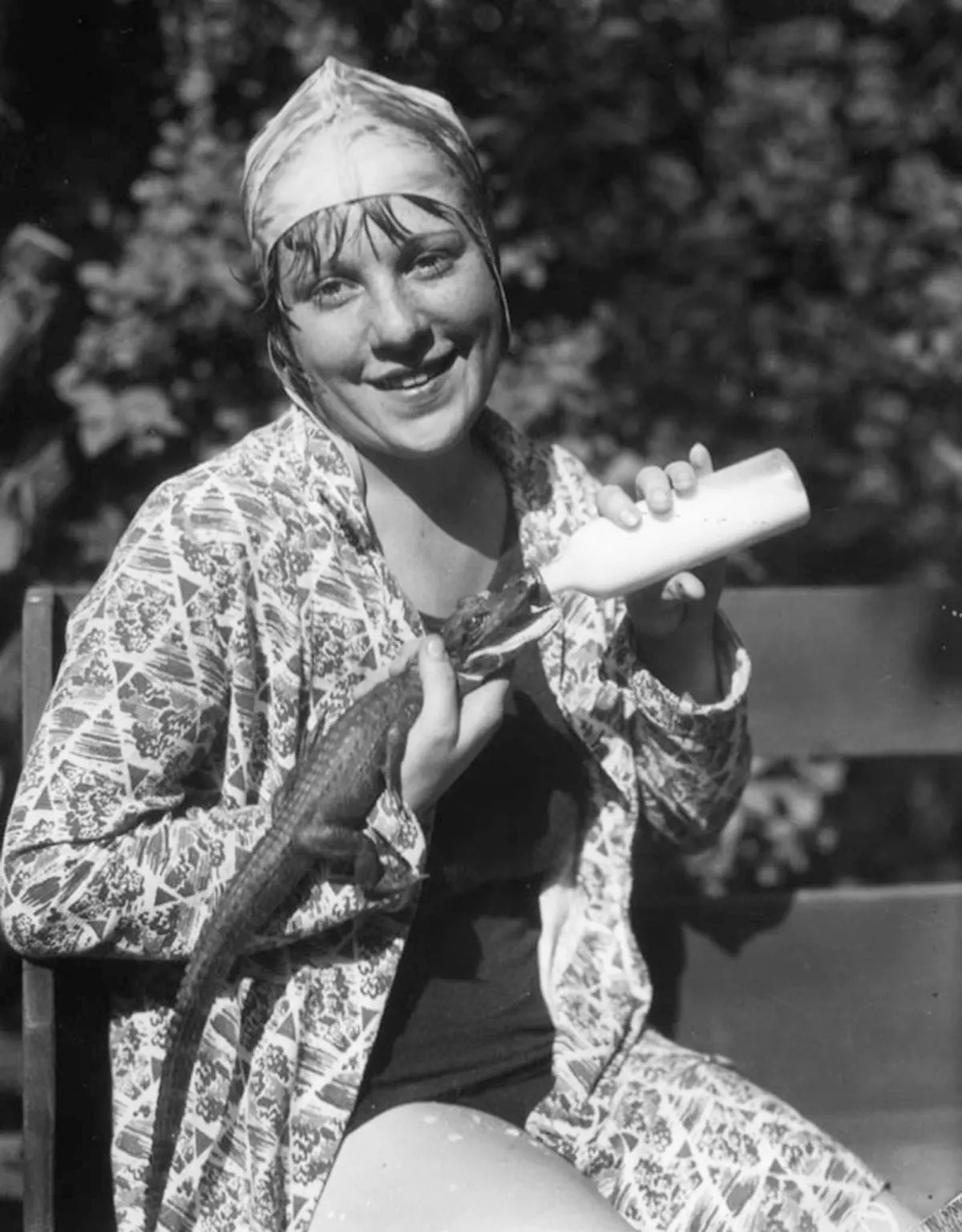
5. A stylish moment with a baby gator

6. The alligator pond at the 1920s California Alligator Farm
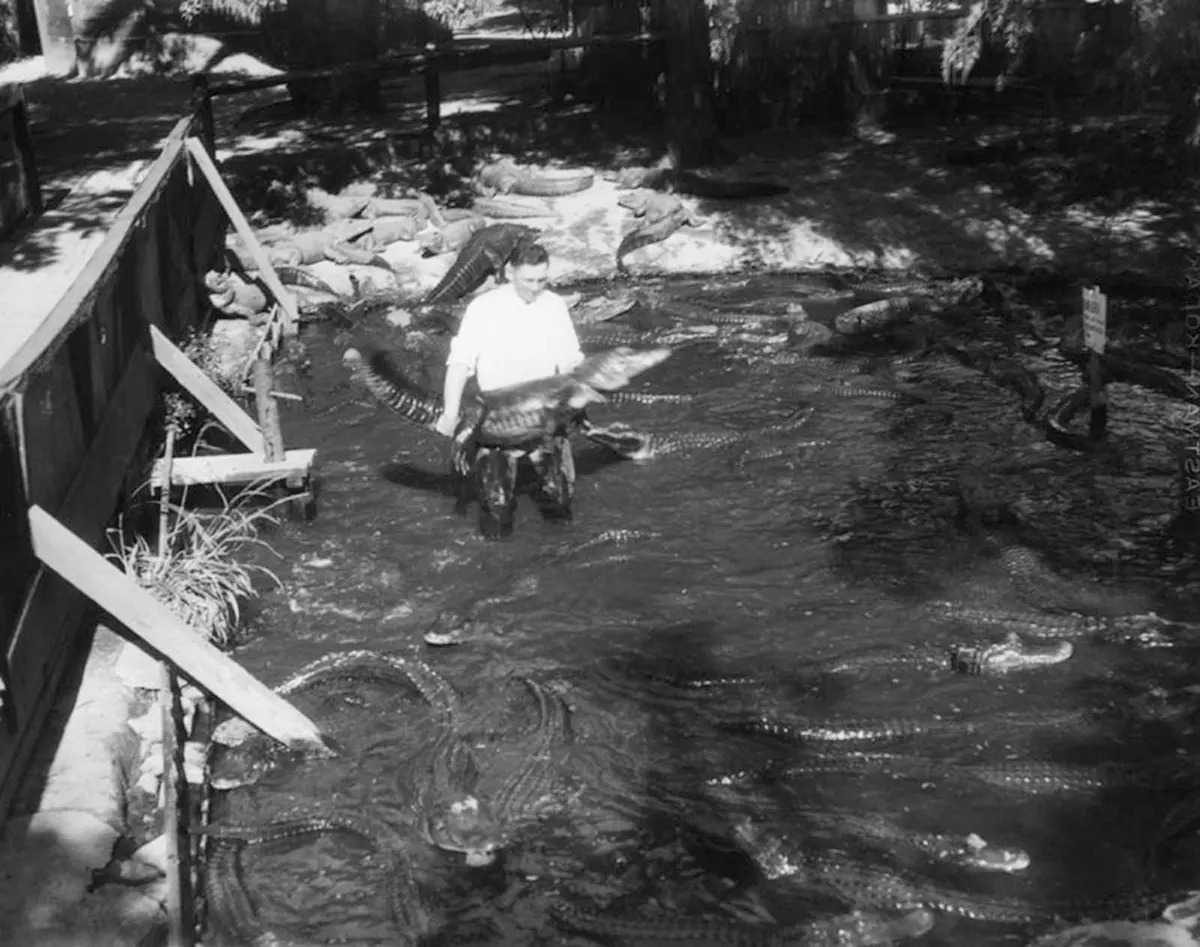
7. Entertaining crowds at the California Alligator Farm with thrilling gator slides, Los Angeles, 1920s

8. Trainer walking a giant alligator at the California Alligator Farm, 1920s
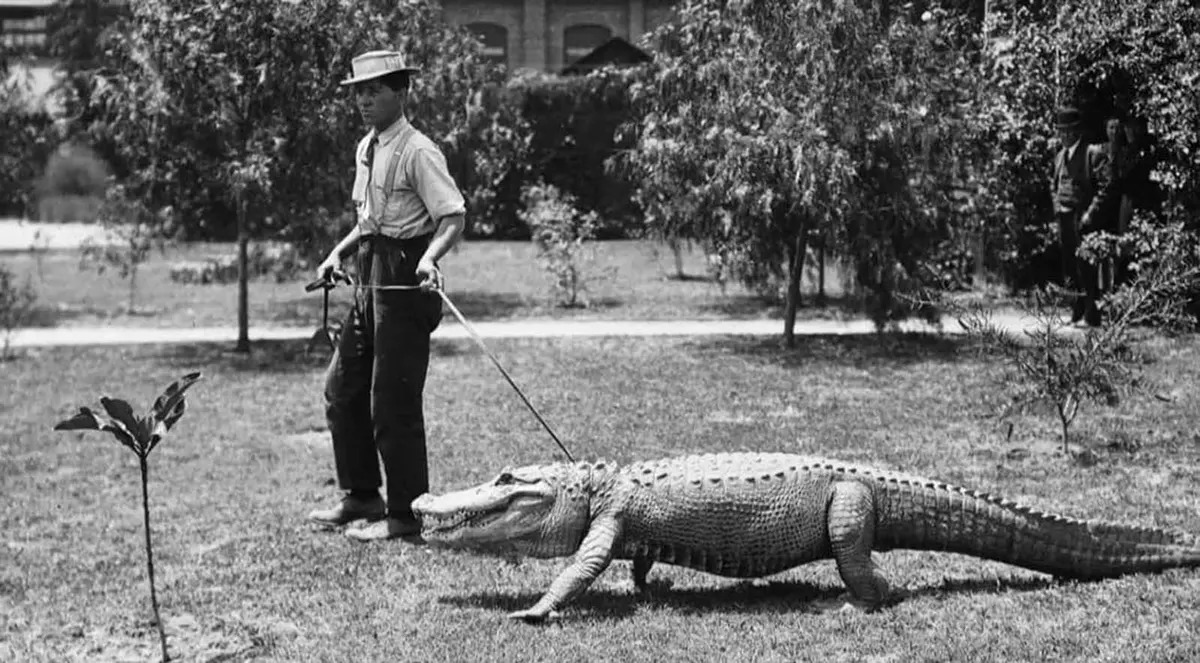
9. Young girl riding an alligator at the California Alligator Farm, 1920s
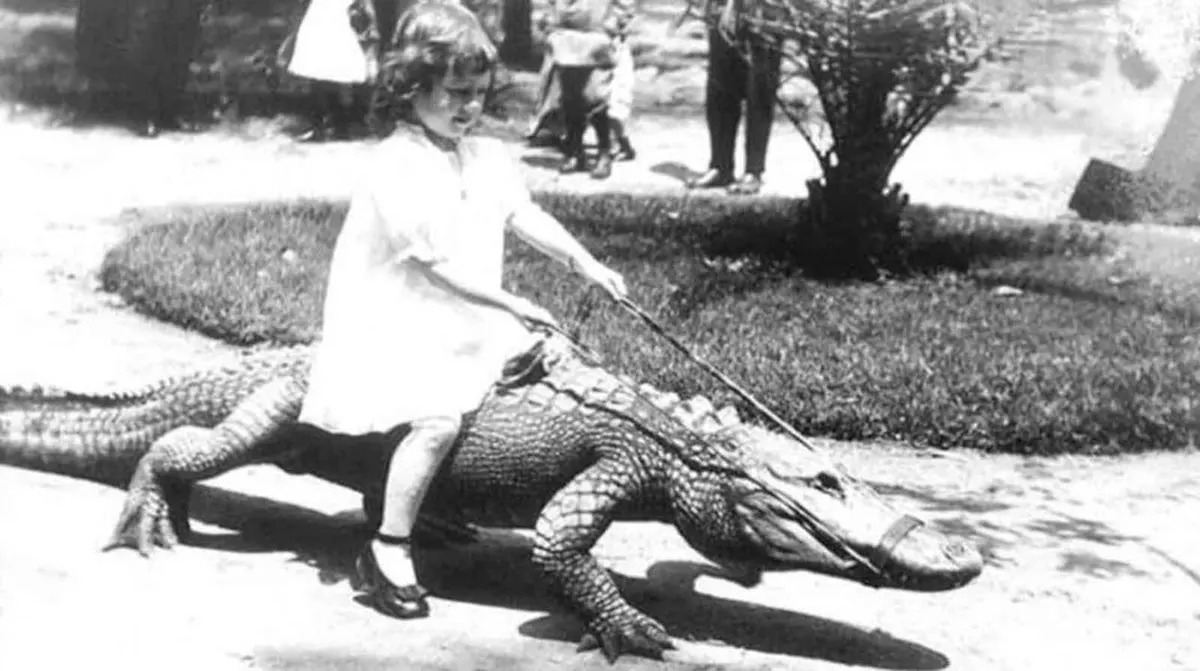
10. Woman relaxing on an alligator
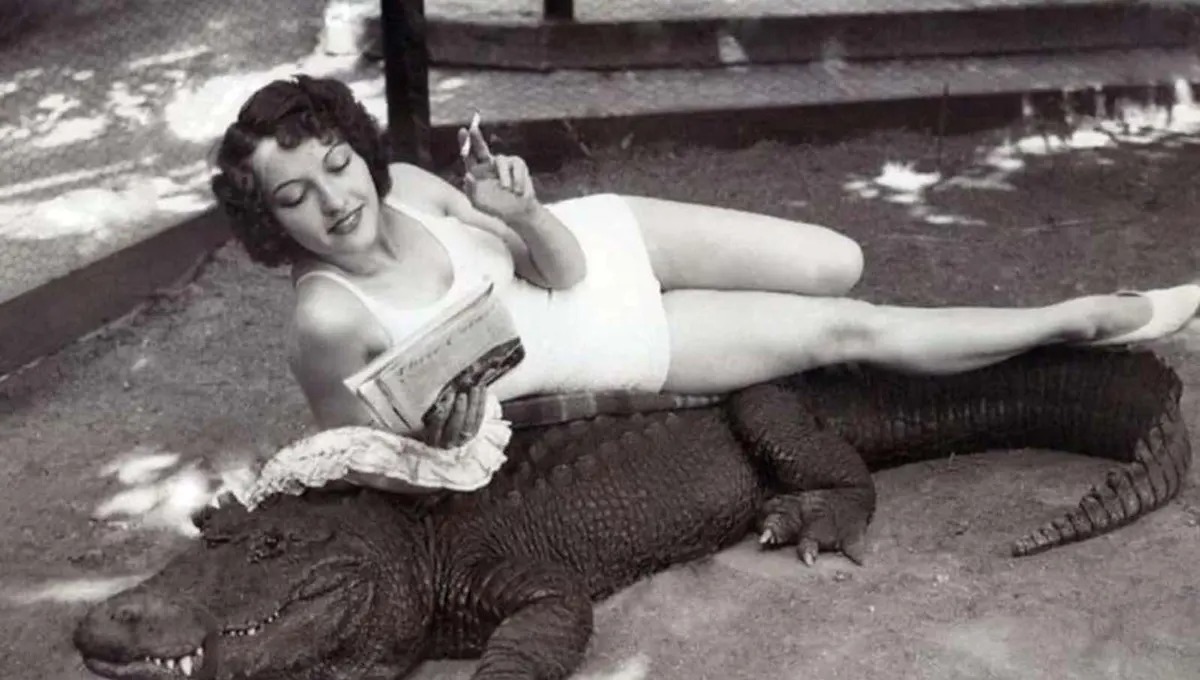
11. A boy riding an alligator
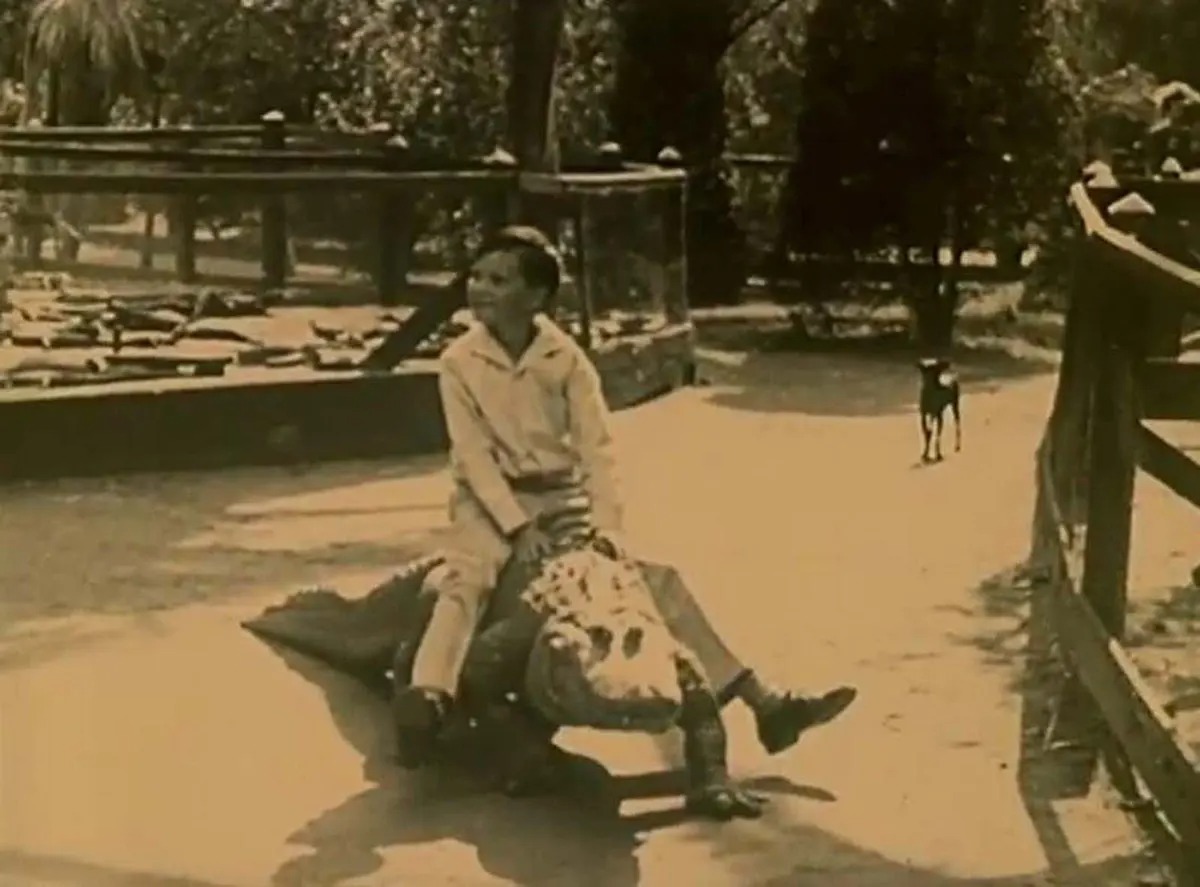
12. Trainer interacting with an alligator

13. Spectators watching a gator show
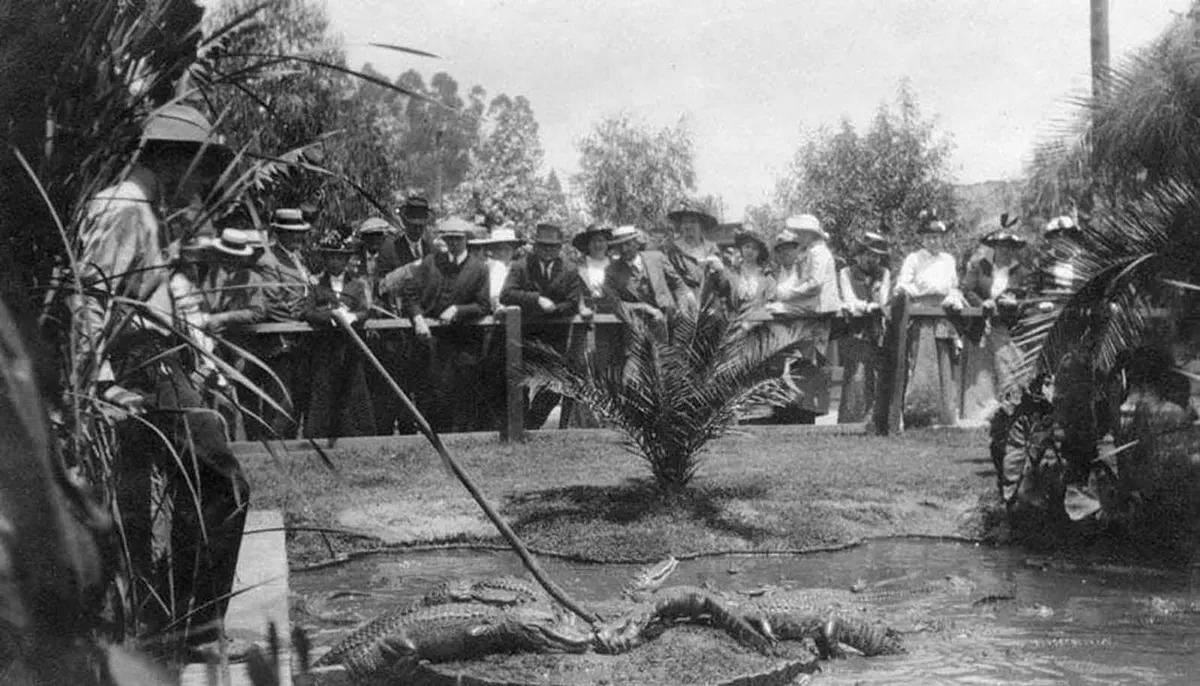
14. Woman giving an alligator a bath
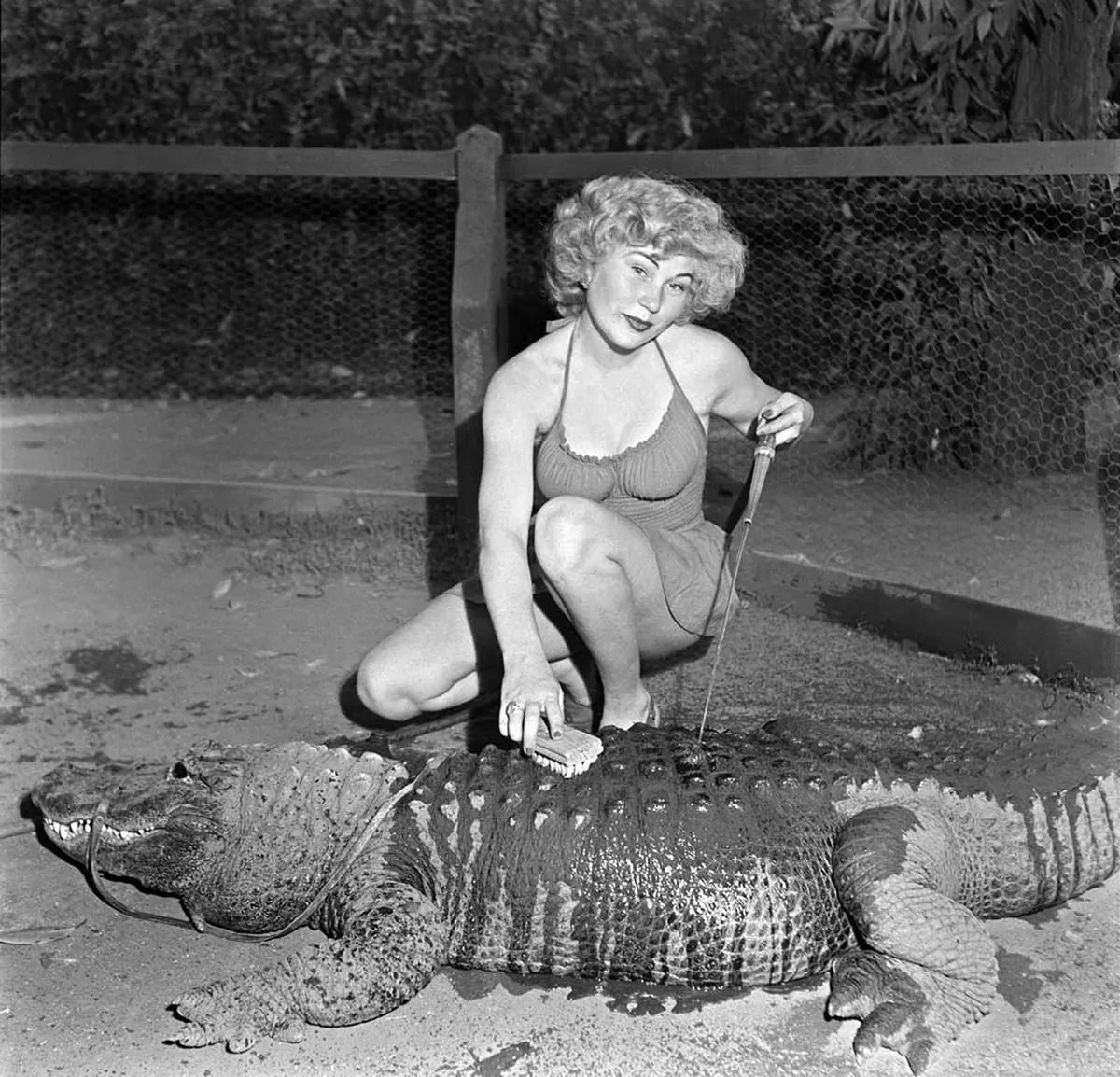
15. Woman lounging with an alligator
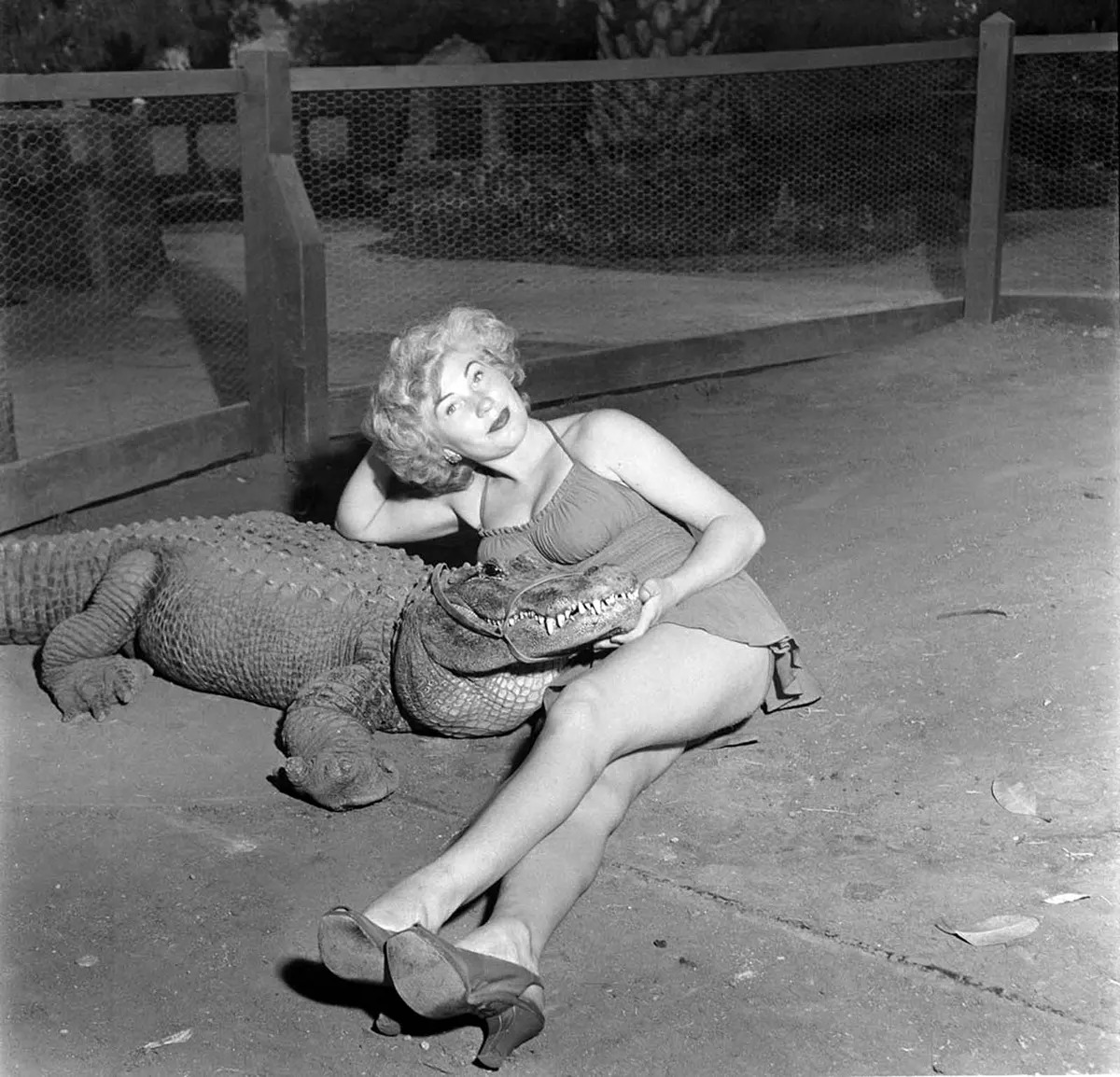
16. Worker wrangling alligators at the California Alligator Farm, surrounded by a swarm of reptiles
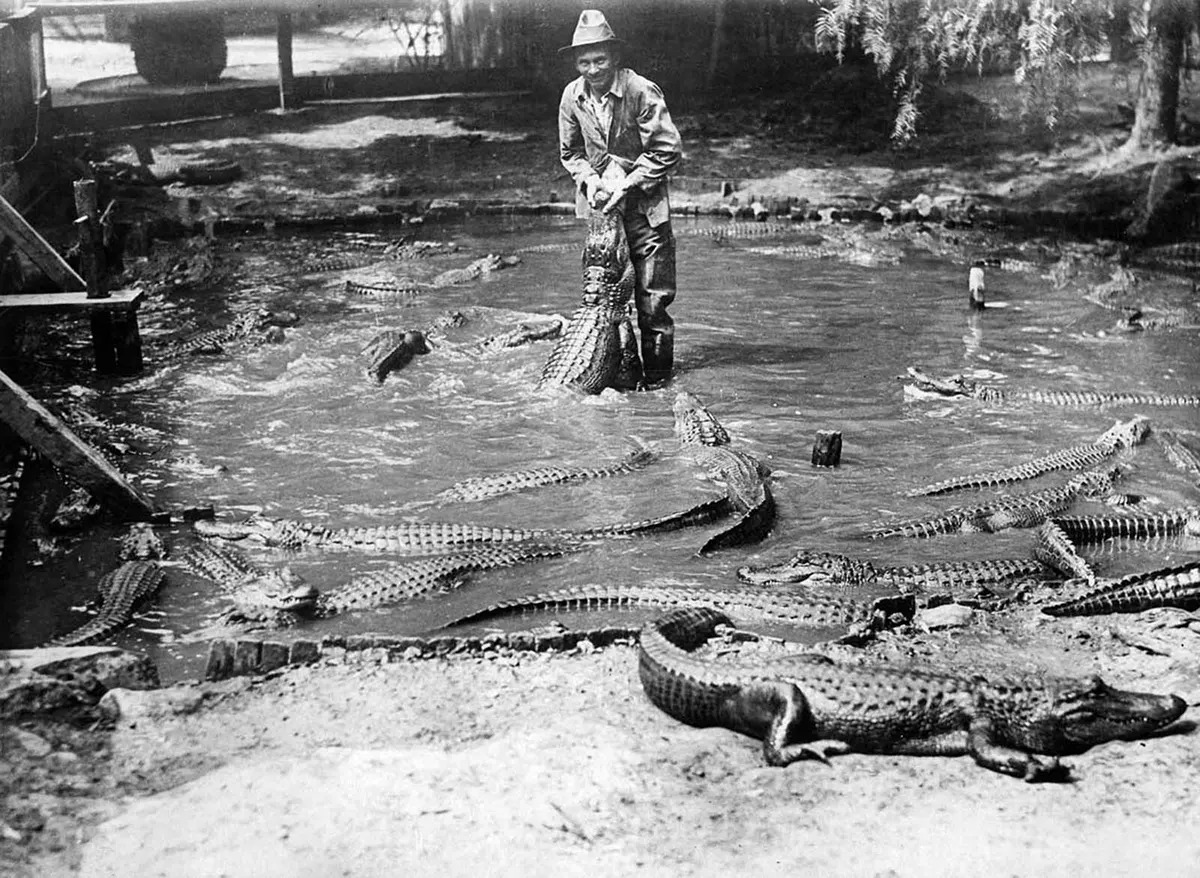
17. Smiling visitor with baby alligators
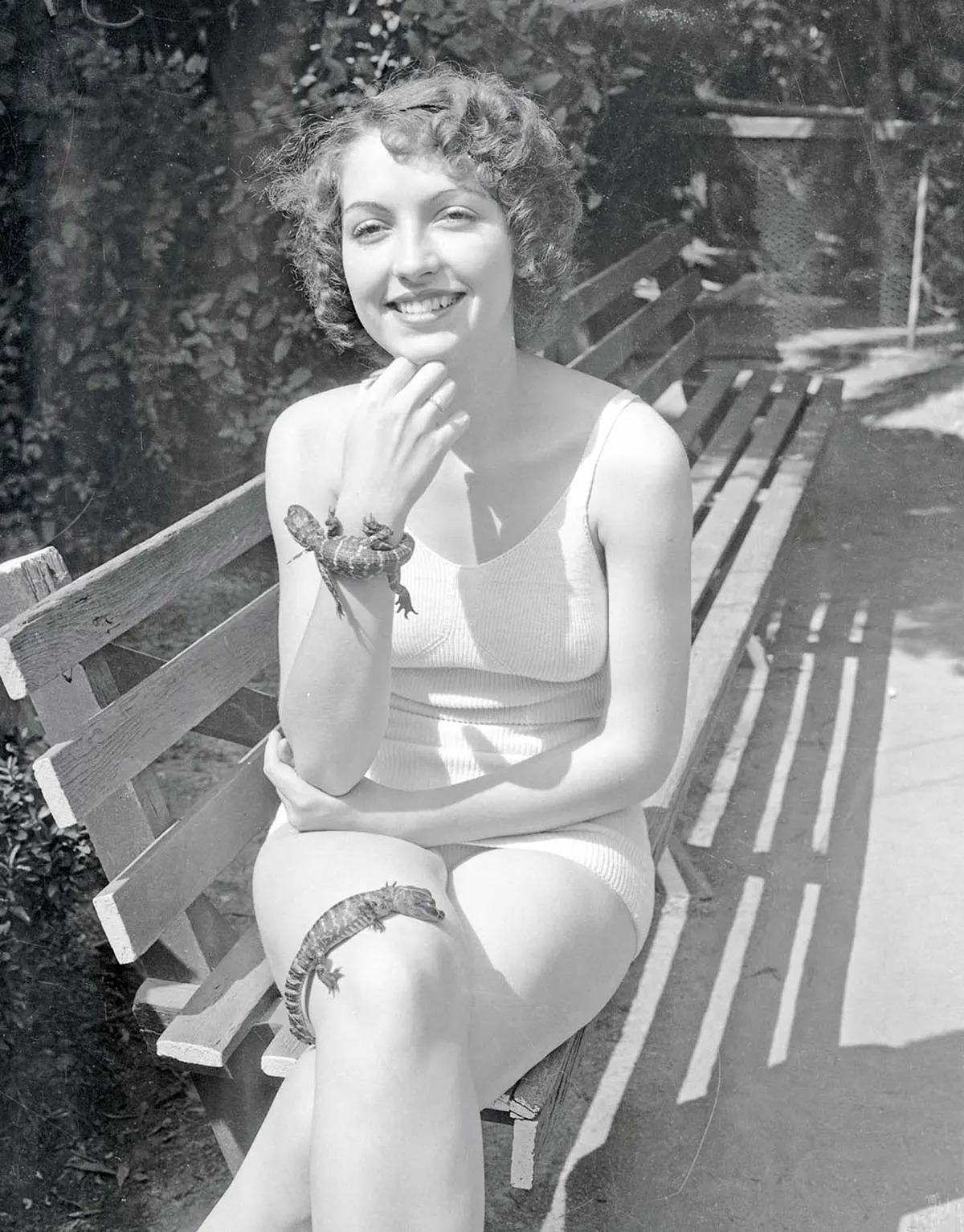
18. Visitors observing alligators lounging in the open at California Alligator Farm

19. Entrance of the California Alligator Farm boasting over 1,000 alligators

20. Woman holding and swimming with an alligator
